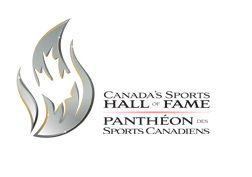Home | Major Sporting Events | Canada Games
Mini Documentary Canada Games
Video Transcript
[Narrator - Catriona Le May Doan - Canada Games Alumni, music interlude of Canada Games song playing throughout entire video, footage of 1967 Canada Games logo, team entering stadium, lighting of the cauldron, figure skaters, speed skaters and ski jumping]
The first Canada Winter Games were held in 1967, the year of the Canadian Centennial celebration. Hosted by Quebec City, the event brought together 1,800 athletes from all corners from the country to compete under the motto "Unity Through Sport" in 15 different sports.
Held every two years since 1967 in communities all across the country, the Canada Games alternate between summer and winter.
[Footage of 1969 Canada Games parade of flags, high jumping, rowing, team members coming on field, speakers, and cauldron flame, images of speed skaters, skiiers coming down Mount Blackstrap, Shirley Firth cross-country skiing]
The Canada Games transform host communities, leaving a legacy of improved sports facilities and infrastructure, trained volunteers, as well as an increased sense of local, regional and national pride.
In some cases, remarkable new landmarks were created, including the infamous Mount Blackstrap: constructed in the middle of the prairies to accommodate alpine sports at the 1971 Canada Winter Games in Saskatoon.
[Images of mascots from Yukon, NWT, Grande Prairie, Brandon and Prince George Games]
By 2007, The Canada Games had completed the circle, with every province and territory having been involved in hosting the event, each time adding unique local and regional colour to the Games.
[Image of 2015 torch with Canada Games Chairman Tom Quinn and other delegates, local volunteers helping at events]
Typically over four years of planning go into organizing and staging each Canada Games, requiring thousands of volunteers.
Working together to achieve a shared vision, local volunteers often created a welcoming atmosphere, enthusiastically inviting visitors to become part of their community.
However, just as the Canada Games celebrates regional diversity, they also promote national unity.
[Footage of former Prime Minister Pierre Trudeau at Canada Games and showing helicopter dropping flags over the crowd below. Announcer describes - to signify the unity of the country and the unity which Games like these provide, they're going to be dropping 10,000 mini Canadian flags over the stadium.]
Inspiring powerful feelings of fellowship and pride, at the 1977 Canada Summer Games held in St. John's, Newfoundland, a Coast Guard helicopter swung in a low arc over the proceedings to drop thousands of small Canadian flags over a cheering crowd.
[Announcer describes the cross country ski race - there she is the gold medallist in this women's cross country, Shirley Firth from the Northwest Territories, image of runner, tennis player, rower, basketball players, and hockey players]
Offering high-level competition to young athletes on a national stage, the Canada Games have proven to be a developmental stepping stone 'where greatness begins'.
Alumni of the Canada Games have gone on to become national, international, Olympic and professional champions whose remarkable athletic careers continue to inspire and excite.
[Footage of Catriona Le May Doan speed skating, images of Catriona Le May Doan in speed skating outfit, with medal and running. Announcer describing speed skating race - but hanging onto them is Catriona Le May, she is not being intimidated by skating against four Quebec girls.]
I competed in three Canada Games, winning medals for speed skating events in 1983 and 1987, and competing in athletics in 1993.
I went on to break thirteen world records before retiring in 2003.
[Images of Jennifer Heil in moguls outfit and action]
Jennifer Heil won gold at the 1999 Canada Games for the Moguls event in Freestyle Skiing before becoming the youngest Canadian skier at the 2002 Olympic Winter Games in Salt Lake City.
[Footage of Bob Gainey playing hockey, images of Sidney Crosby wearing Canada Winter Games jersey from 2003 Games,]
Other Canada Games Alumni have become hockey legends, including defensive star Bob Gainey, who competed in the 1971 Canada Winter Games and went on to win five Stanley Cup championships with the Montreal Canadiens.
More recently, Sidney Crosby competed in the 2003 Canada Winter Games before achieving excellence as a celebrated star in the National Hockey League.
[Footage of Lennox Lewis boxing]
Lennox Lewis was awarded a gold medal in boxing at the 1983 Canada Winter Games, the same year he won the world junior super heavyweight championship.
Lewis went on to a dazzling career, becoming the first Canadian boxer to win Olympic gold since 1932, as well as world heavyweight champion by the age of 38.
[Images of Nicolas Gill competing in judo]
Judo champion Nicolas Gill competed in the 1987 Canada Summer Games, winning a Gold medal in the 54kg event.
After his experience at the Canada Games, Gill dominated Judo nationally and internationally, becoming an Olympic medallist in 1992 and 2000. He claimed a remarkable ten national titles before retiring in 2004.
[Toller Cranston - Footage of Toller Cranston skating and various images of him in different skating outfits]
Other Canada Games Alumni went on to raise the profile of their sport through creative innovation.
Figure skater Toller Cranston won a gold medal at the first Canada Winter Games in 1967 before going on to win five national titles as well as an Olympic medal in 1976.
Cranston bravely pioneered a more expressive style of men's figure skating that made it difficult to succeed with judges in his early career, persisting until he had raised the artistry of the sport to exhilarating new levels.
[Catriona Le May Doan - Canada Games Alumni, image of athletes holding up a Canada Games flag]
These stories bring to life the unique, empowering spirit and opportunity that is The Canada Games.
Previous Next


